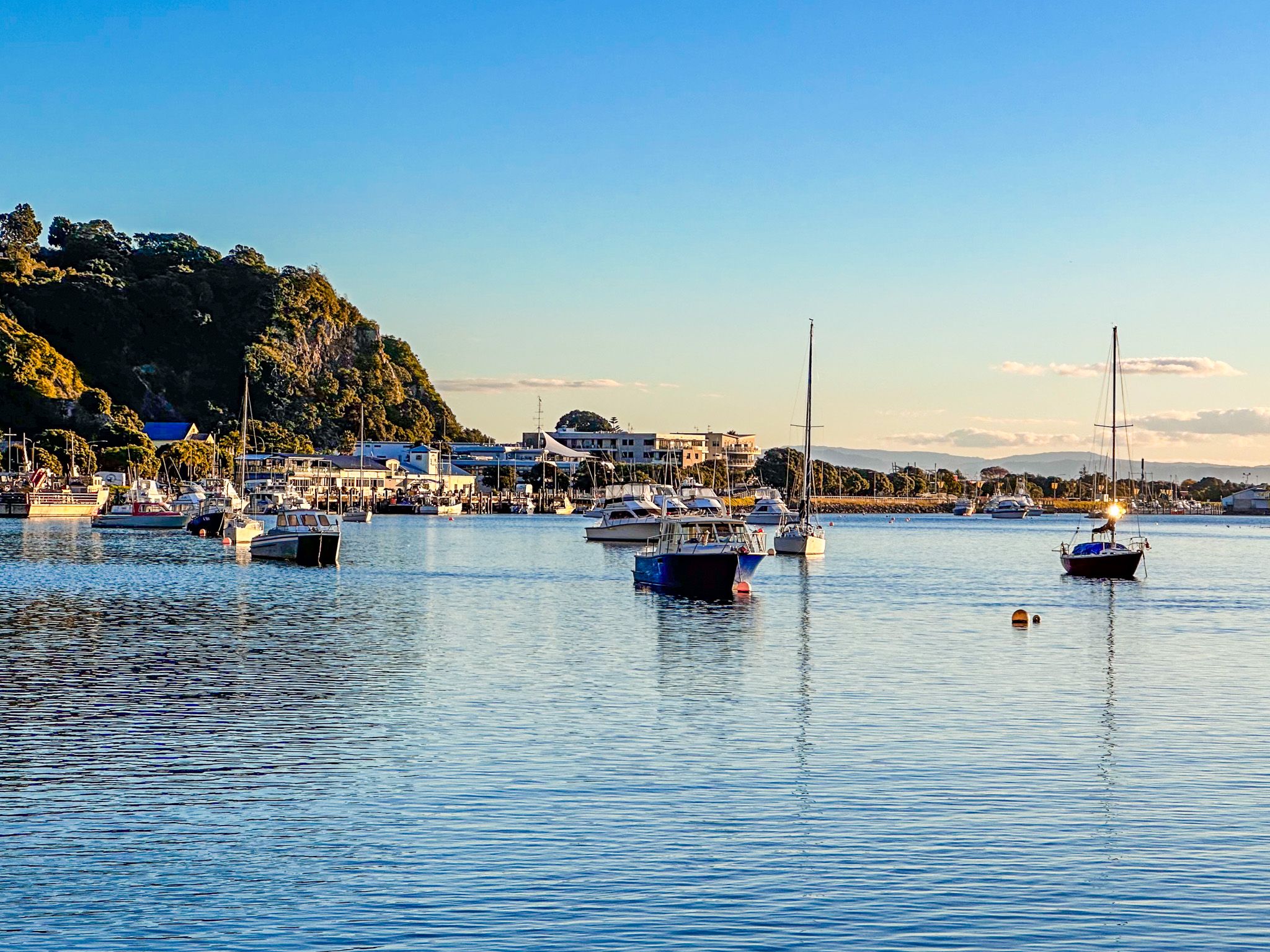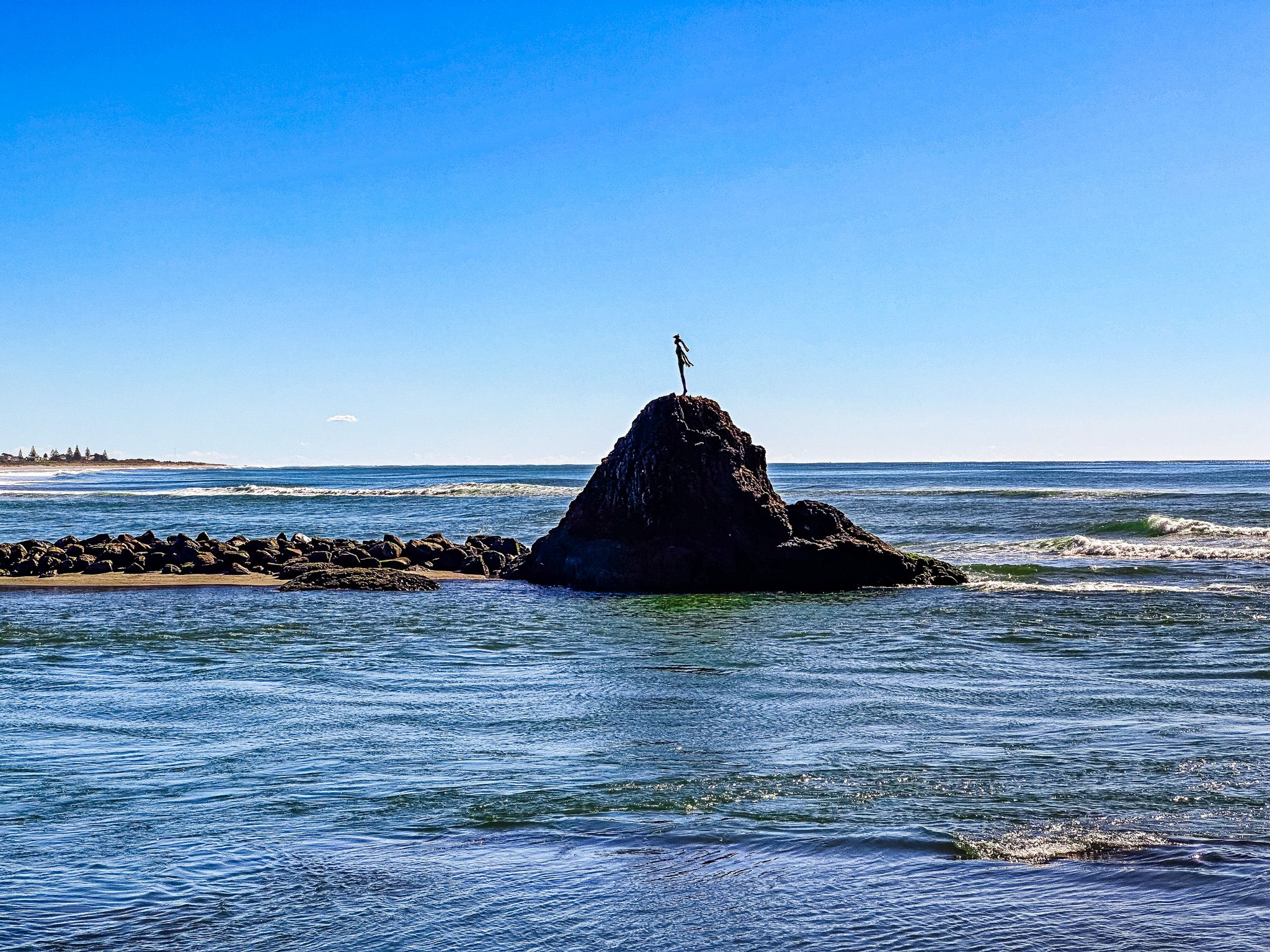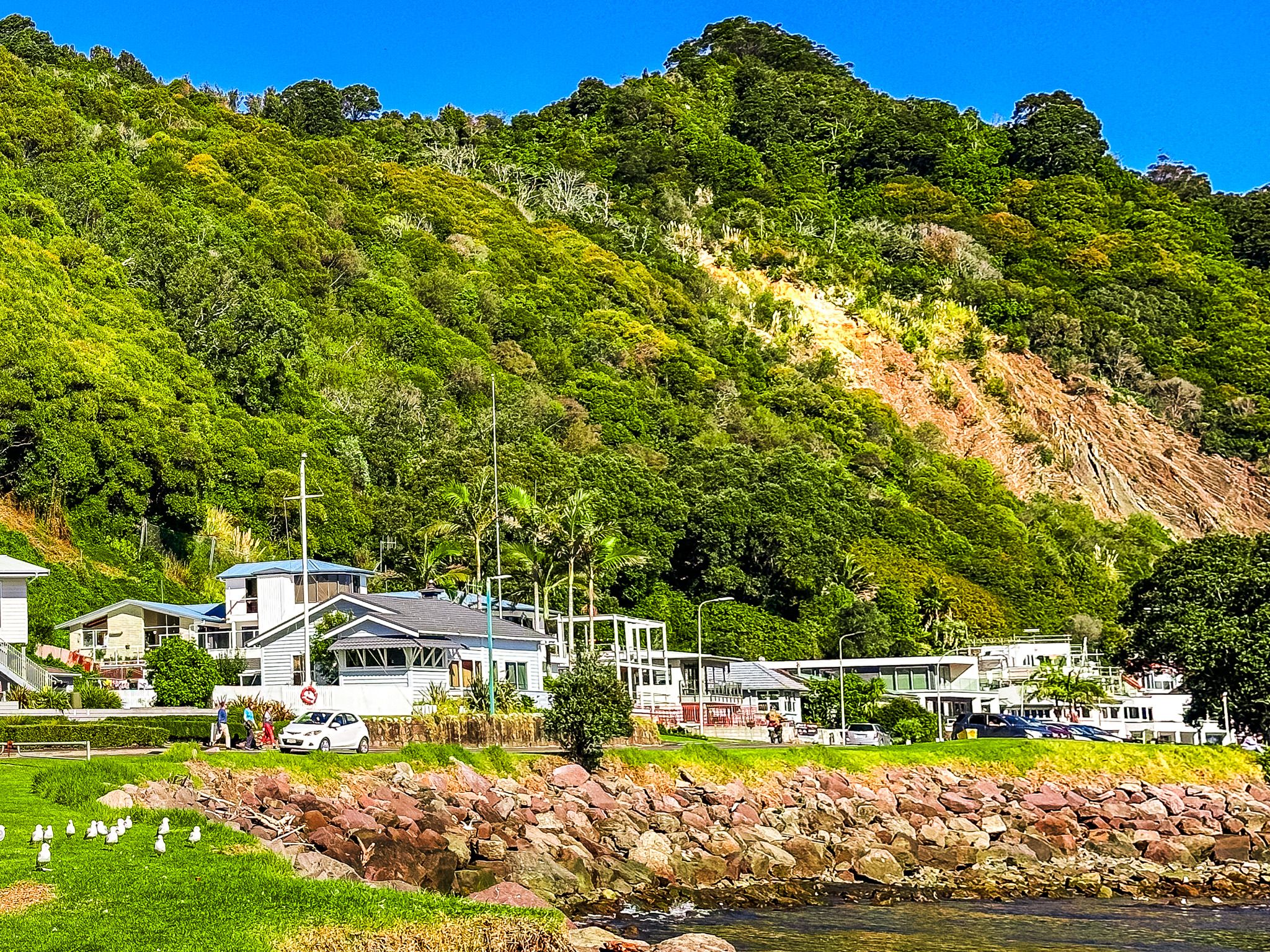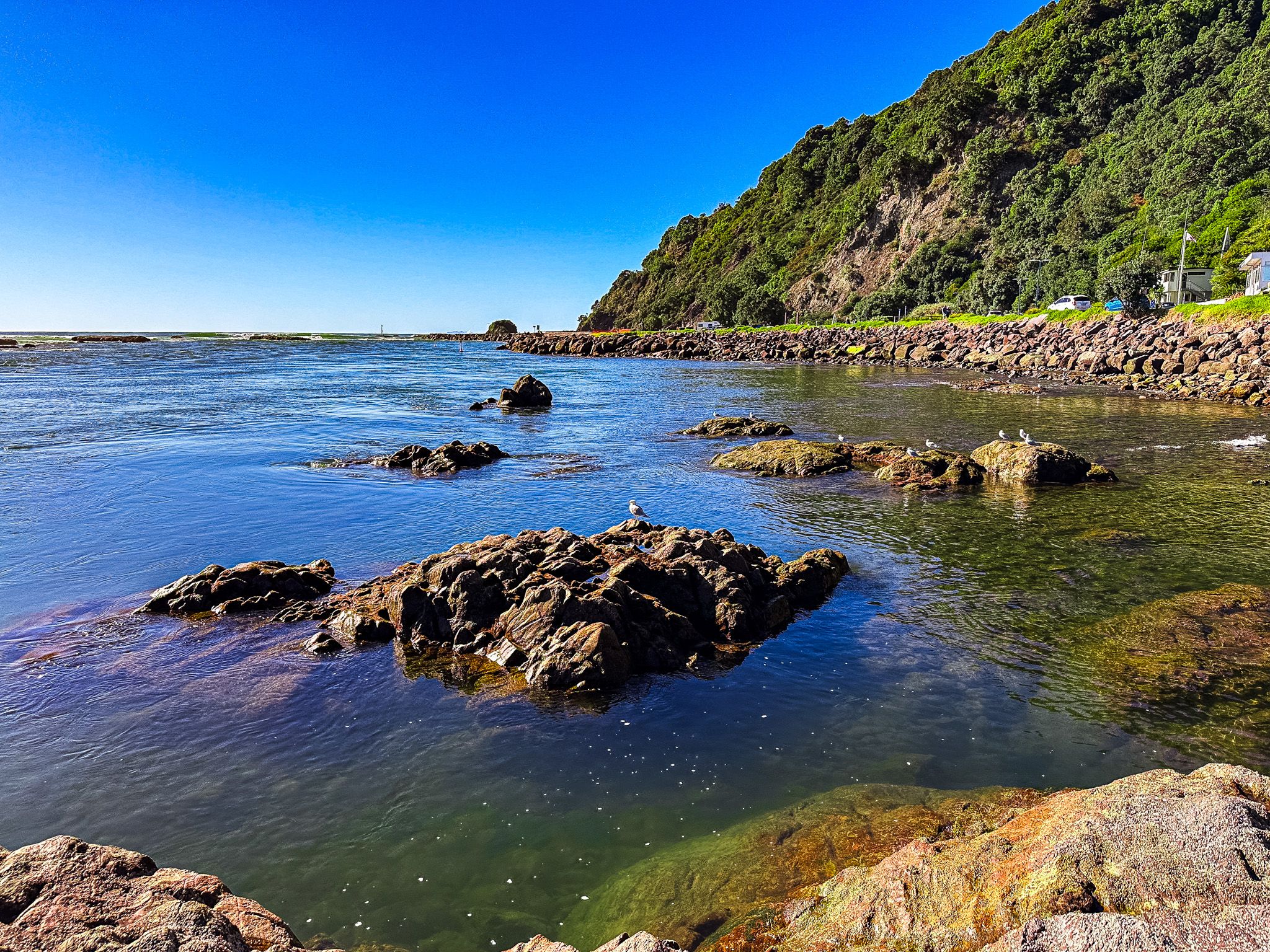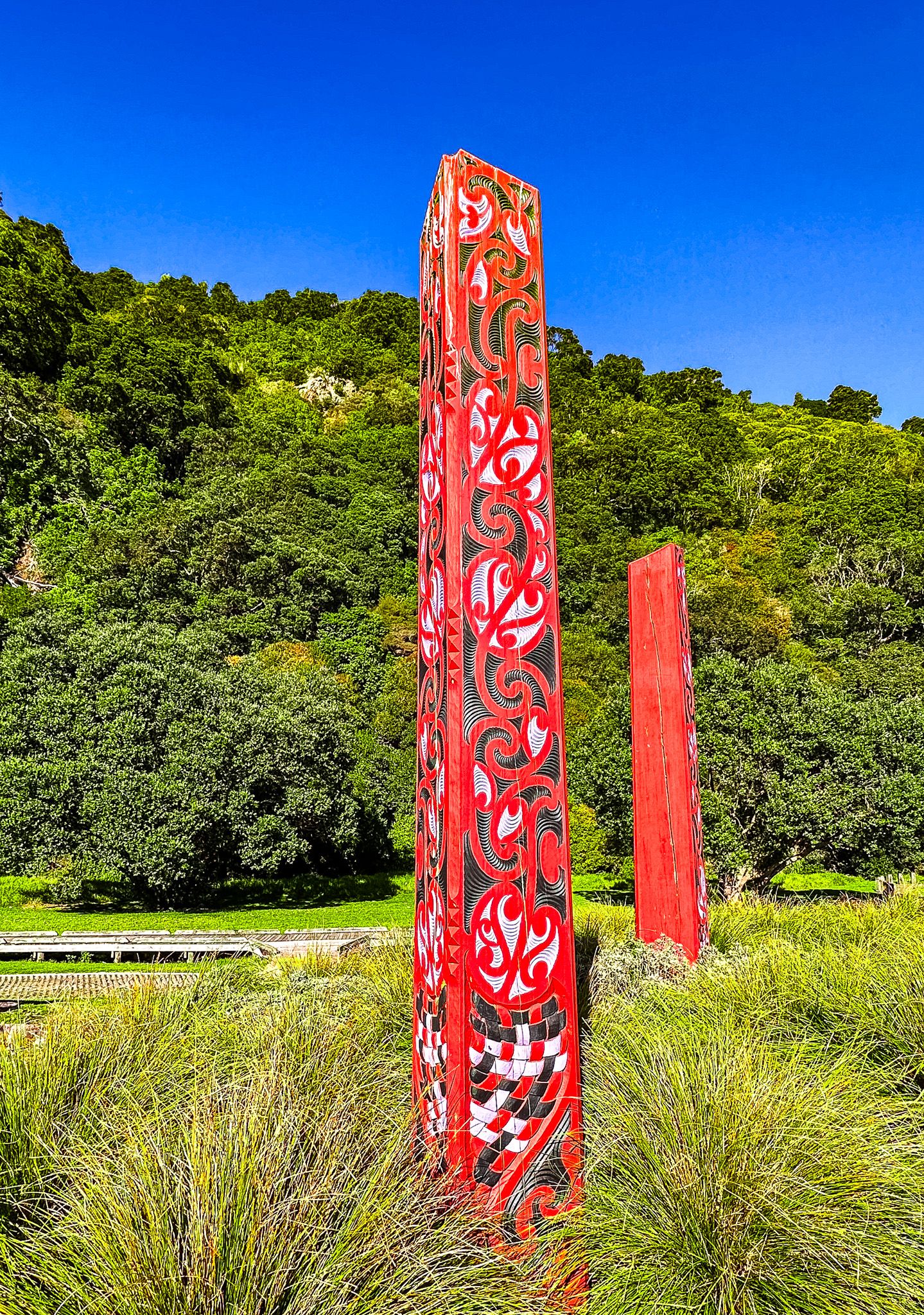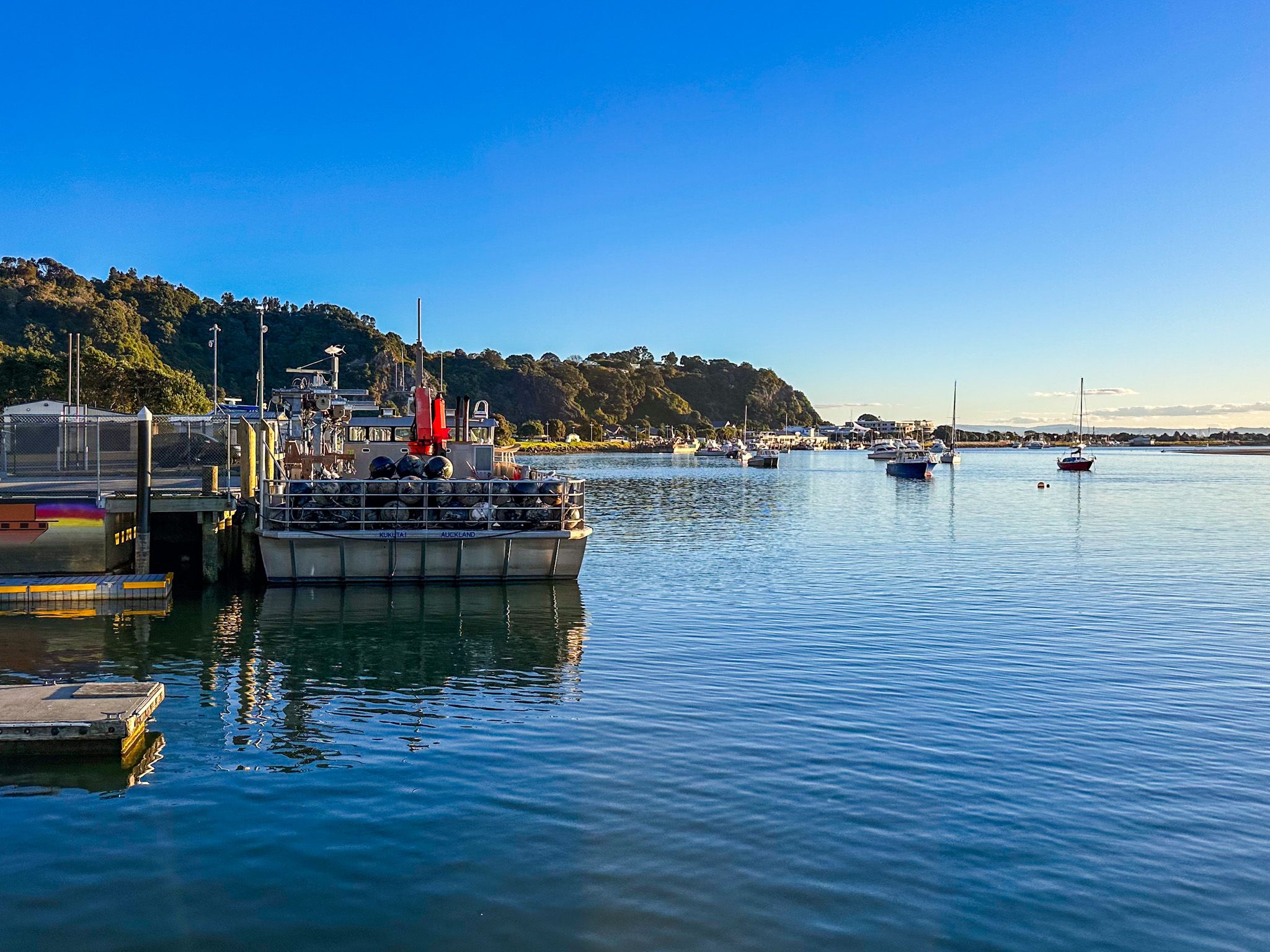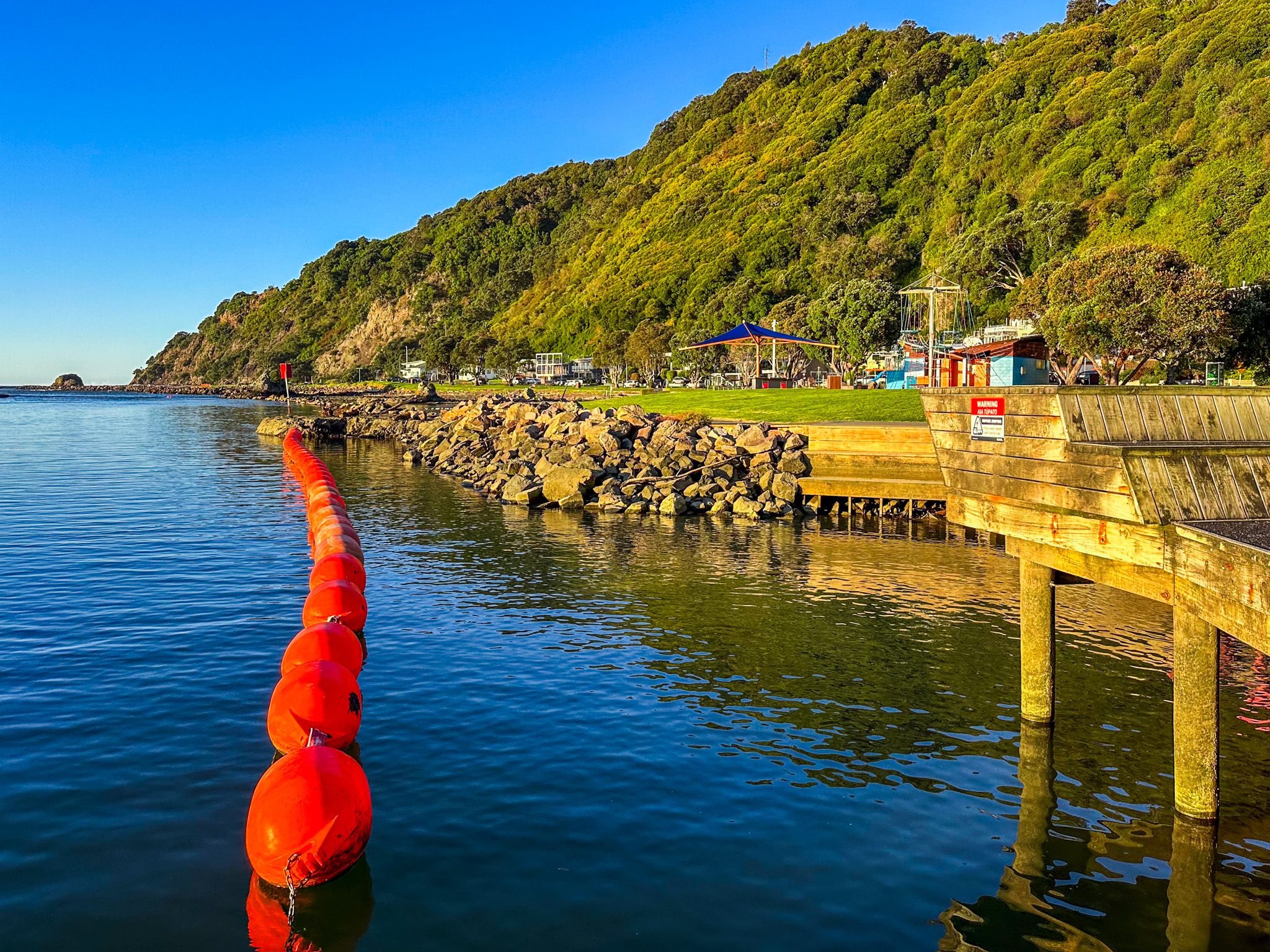The Whakatāne harbour sits inside the Whakatāne River mouth, northeast of the town centre. The cliffs and forest-clad hills of the Whakatāne Heads line the harbour, while the entrance to the sea is marked by the heroic statue of Wairaka atop Turuturu Roimata. Muriwai Road runs between the harbour and Whakatāne Heads to Te Hau Tutua Park, a large grassed reserve with two superb pou. The park is on the river mouth, and on the other side is the heroic Wairaka statue.
There is a small commercial port, a marina and a boat ramp. You can also take a boat to 353 metres high Moutohora Island (Whale Island), a DOC-protected sanctuary opposite Coastlands. Heading east of the main port area is Mataatua Reserve, where the waka Mataatua (named after the original) is stored in a shelter. A little further east is Wairaka Centennial Park, which includes a large platform for jumping into the river and access to a small beach protected by a rock breakwater. Swimming out into the river is unsafe as boats regularly use it.
As you walk from the town past Mataatua Reserve, you will also spot Te Ana o Muriwai (Muriwai’s Cave) on the opposite side of the road. This historically significant site is one of the three landmarks Toroa was told to look for by his father, Irakewa, when the ocean-going waka Mataatua arrived about 750 years ago. The other landmarks are Te Wairere (Wairere Falls) and Te Toka o Irakewa (Irakewa Rock).
Muriwai was the sister of Toroa and famous for her wisdom and second sight. She initially settled in Ōhiwa, the large harbour to the east of Whakatāne, then east again in Ōpōtiki, where she founded the Whakatōhea iwi. She eventually returned to Whakatāne and resided in the cave. The tapu on her death was not removed until 1963! The cave is now quite small but was once large enough to accommodate 60 people and extended 122 metres into the hillside.
Just beyond the small beach, you will also see an interesting large rock with a couple of plaques. The first commemorates the park's establishment, 100 years after the Treaty of Waitangi and the second records the landing of the Mataataua, captained by Toroa, in the rather specific year of 1340.
